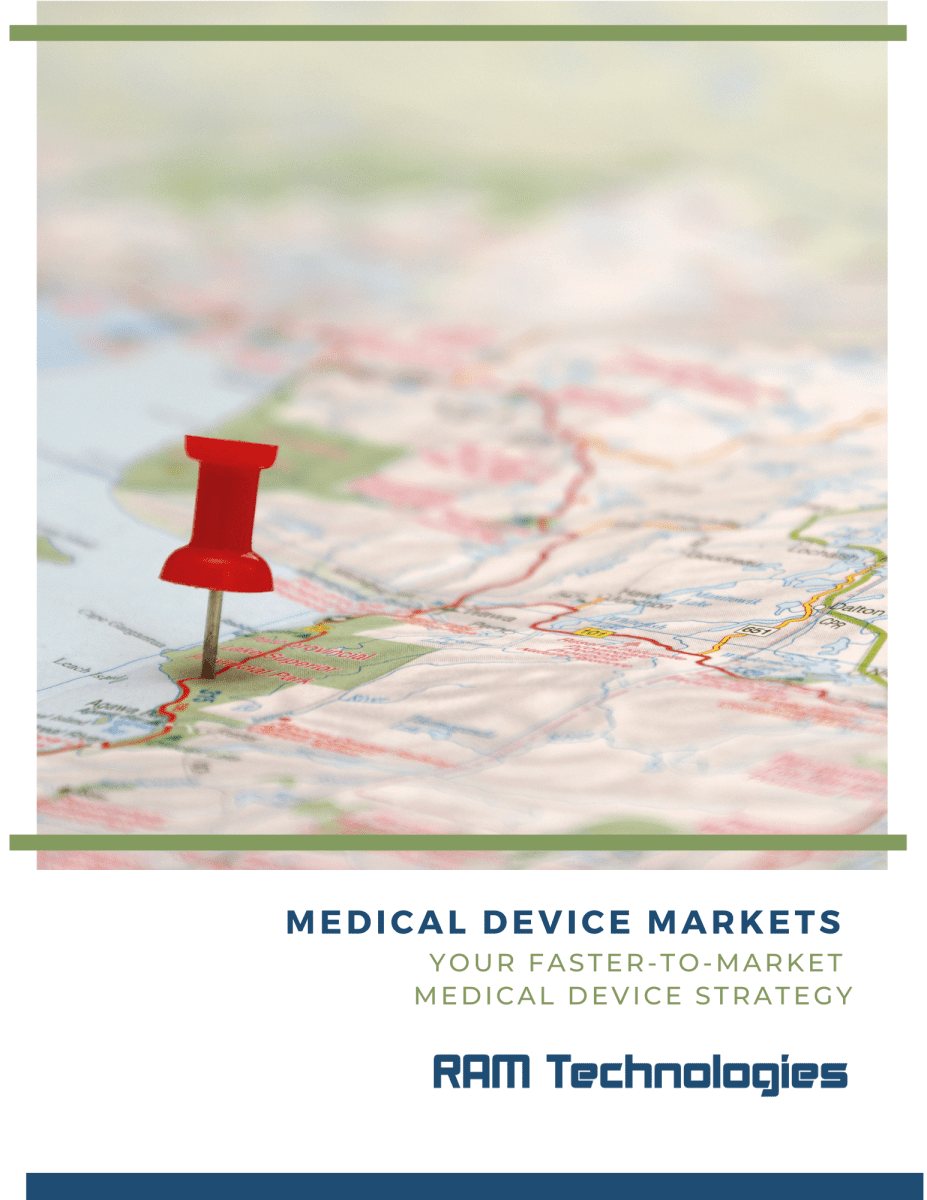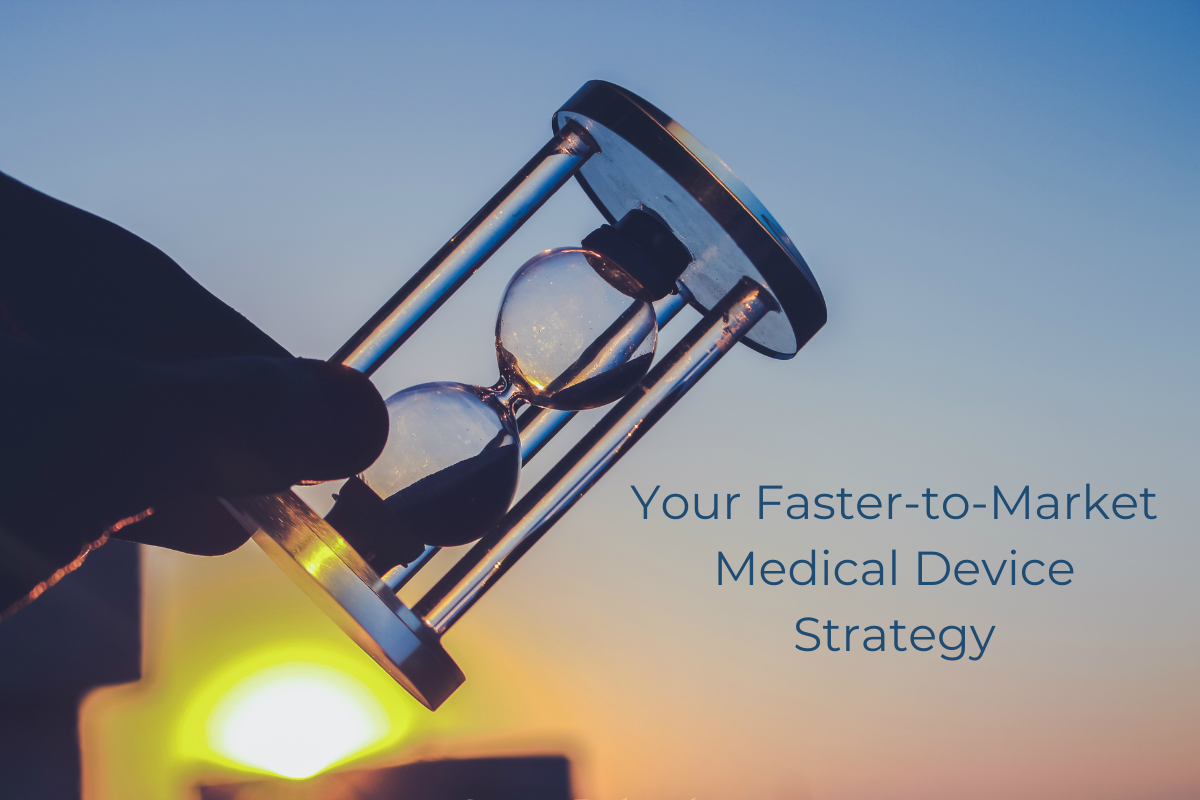For medical device manufacturers, time to market can make the difference between gaining a competitive edge and falling behind the pack. If you are looking to get to market faster, you need to understand the various medical device markets, the current regulatory landscape, how to build a market adoption strategy, and how to choose vendors that can help you with your time to market. We’ll go through all of these pieces to help you develop a faster-to-market medical device strategy.
Ways you can get to market faster
Understanding the medical device markets
United States
The United States has the largest medical device market size, making up 43.5% of the total global medical technology market. Medtech exports from the US have also outpaced imports, reaching $1.1 billion in 2017. The global medical device market is saturated in general, but in the US, there is a greater competition that requires a more sophisticated market adoption strategy to stand out.
European Union
The medical technology market is worth €150 billion in the EU. This includes medical devices, digital health tools & services, and in vitro diagnostics – 27.3% of the total global market is represented in the EU. The largest markets within this region include Germany, France, the UK, Italy, and Spain. Germany holds the largest market share at 25.8%, followed by France at 14.3%. Between 2009 and 2021, growth in the area ranged from 2.4% to 9.3%.
Understanding the regulatory landscape
The size of the market only tells part of the story. Recent regulatory shifts have made it more appealing to sell in the U.S. and go through the FDA compared to going through MDR in the EU.
MDR in the EU
Manufacturers who sell medical devices in the EU need to comply with EU No. 2017/745, more commonly known as Medical Device Regulation (MDR). Devices are classified by MDR according to risk, ranging from Class I for the least risky devices to Class III for devices that hold the highest level of risk.
You can self-certify for devices that don’t have measuring, reusable, or sterile functions, but for all other devices, there is a requirement to work with a Notified Body to get a conformity assessment. Before the product goes to market, there needs to be proof that the device conforms to established guidelines. After passing, manufacturers can make a Declaration of Conformity (DOC) and apply the CE mark.
One of the biggest obstacles manufacturers face in getting their devices approved through MDR is the backlog in availability for notified bodies. There can be up to a 12-24 month wait for conformity assessments. Even if a notified body is available, if they don’t specialize in your device type, you may need to wait until an appropriate body is available.
To work with a notifying body, manufacturers should expect to spend anywhere from €20,000 – €100,000.
FDA in the US.
In The United States, manufacturers need to seek approval through the Food and Drug Administration (FDA). Risk classifications through the FDA are similar to MDR and go from Class I to Class III.
Some Class I and Class II medical devices come with exemptions – 95% of Class I devices don’t need premarket notification applications. However, they will still need to register an establishment of the device and list their product with the FDA.
Other devices that carry higher risks will need to go through the premarket submission process, also known as the 510(k) process, which applies as long as the product is substantially equivalent to another on the market that has already been approved. If the device is not like anything on the market, manufacturers need to go through the de novo process.
Depending on the path, manufacturers need to take to get approval through the FDA, costs and timelines can vary. The 510(k) pathway costs $19,870, or $4,967 for small businesses. The de novo pathway costs $132,464 or $33,116 for small businesses.
Businesses looking to gain approval through the 510(k) pathway will experience significantly shorter wait times than through the MDR. On average, it takes about 6 months for clearance. Even the de novo pathway can be comparable to MDR, with an average of 16 months for clearance.
Understanding testing options
The regulations you need to meet for your device will depend on the type of device and components, as well as where you are planning to sell. Once you get to testing, you are working to prove that your device meets the necessary standards.
Horizontal standards
You may need to test to meet horizontal standards, semi-horizontal standards, or vertical standards. Horizontal standards have broader applications for all medical devices. This includes usability, quality management, and how risk is managed with the device. Not all countries recognize all horizontal standards.
Semi-horizontal standards
Semi-horizontal standards apply to features of medical devices that can apply across more than one product group. For example, IEC 60601-1 is a semi-horizontal standard that applies to the safety and performance requirements for all medical electrical equipment.
Vertical standards
Vertical standards are applicable to certain product groups and can be searched via the FDA Recognized Consensus Standards Database for medical devices marketed in the U.S. Products can also be searched through the Product Code Classification Database or the 510(k) Premarket Notification Database. The key to vertical standards is finding approximations to the device you are working on bringing to the market so you know which standards to check.
Different facilities test for different standards. By starting with knowing the standards you need to test, you can determine which facilities you can use for the testing itself.
Creating a strategy that drives adoption
If you want to drive the adoption of your medical devices, you need a solid strategy:
- Bring in the right stakeholders: Adding important voices to the process early on will help you evaluate the need for your device and identify opportunities in the market for differentiation. Plus, if the stakeholders believe in the product, you can gain traction from their endorsement.
- Differentiate your product while maintaining familiarity: It can be hard to get medical professionals to switch to a new device if they are familiar and comfortable with something already on the market. If you are able to differentiate the product while still making it feel familiar to potential users, you stand a better chance of gaining ground. Improving on a problem that exists with a current device also increases the likelihood that the device will become popular.
- Build a launch plan: When the device has been approved and is ready for launch, create a comprehensive launch plan that includes a marketing plan, training for sales and end users, product documentation, and a budget for each part of the launch plan.
- Support early adopters: Early adopters can be your strongest advocates. Open the lines of communication with customers. Use their feedback to make changes to documentation or device functionality as needed.
- Taking a narrow approach to adoption: Your medical device can’t be everything to everyone. Segment your audience and your approach by starting narrow and expanding over time.
Choosing compliant components from quality vendors
One of the most efficient ways you can cut your time to market is by using medically compliant components in your medical devices. Working with a quality vendor to get a power supply that works in a PC-based medical device, for example, is one of the most crucial components in getting to market quickly.
RAM Technologies’ medical-grade power supplies fully meet EN 60601-1 and EN61000 standards, as well as other medical and electrical standards your product needs to meet.
We can customize the power supply cabling, give you the outputs you need, and provide prototypes within two weeks. Plus, we can help power not just the PC components of your medical device, but also the auxiliary items.
Get back to designing and innovating. Leave the power supply concerns to us! Reach out to learn more about our certified medical power supplies: Contact Us.
RAM Technologies’ power supplies are 60601-1 3.2 certified and meet 60601-1-2 EMC standards. When you’re designing your medical device and need help with a PSU, contact us for details.

Download the Markets Guide
This guide covers the basics on medical device markets, including emerging trends, current regulations, and market adoption strategies. Sign up and download it for free now!
